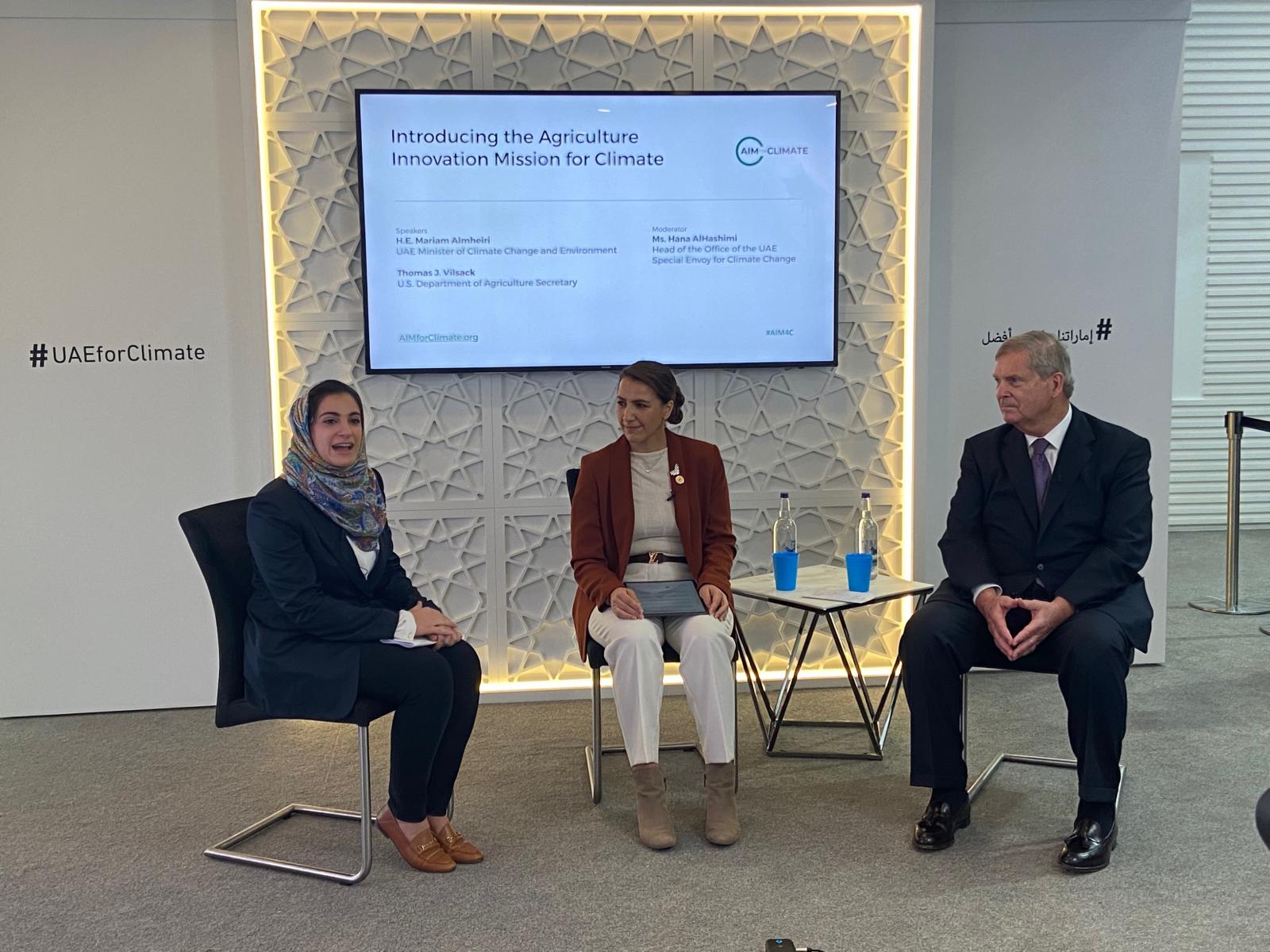USDA Underscores Commitment to Climate Action at COP26

GLASGOW, SCOTLAND, Nov. 5, 2021 – At the 26th United Nations Climate Change Conference of the Parties (COP26) this week, Secretary of Agriculture Tom Vilsack underscored the U.S. Department of Agriculture’s support for President Biden’s whole-of-government approach to combatting climate change and creating good-paying jobs and economic growth in the United States. At meetings and events throughout the conference, Vilsack highlighted USDA partnerships and initiatives that put agriculture, forestry and rural communities at the center of global solutions to the climate crisis.
“Climate change is happening, and it threatens to disrupt our food systems, worsen food insecurity and negatively impact the livelihoods of our agricultural producers,” Vilsack said. “Now is the time for global action to address climate change. Together, we can lead the way with investments in climate-smart solutions that improve the profitability and resilience of agricultural producers, and improve forest health, while creating new income opportunities and building wealth that stays in rural communities.”
Agriculture Innovation Mission for Climate
After President Biden joined leaders from the United Arab Emirates in officially launching the Agriculture Innovation Mission for Climate (AIM for Climate) Nov. 2, Vilsack participated in numerous events to coalesce support for the landmark initiative.
“USDA is proud to be one of the U.S. government agencies spearheading this global effort to accelerate investment in innovative, science-based solutions to increase food security and help agriculture and food systems mitigate and adapt to climate change. By catalyzing greater public and private investment and cross-sectoral partnerships, AIM for Climate will lead to rapid and transformative climate action across the world,” he said.
Already, nearly 80 countries and non-government partners have joined in support and AIM for Climate has garnered an “early harvest” of $4 billion in increased investment in climate-smart agriculture and food systems innovation, with the U.S. mobilizing $1 billion over the next five years.
Climate-Smart Agriculture and Forestry
Vilsack highlighted USDA’s Climate Smart Agriculture and Forestry Partnership Initiative, which he first announced during UN Climate Week in September. The initiative will connect agricultural producers who are implementing climate-smart practices with retailers, companies and consumers who are demanding low-carbon agricultural commodities.
“We’re positioning U.S. farmers, ranchers and forest landowners as leaders in addressing climate change, while at the same time creating new market opportunities for them through pilot projects that invest in science, monitoring and verification to measure the benefits of climate-smart production practices,” Vilsack said. “Unlocking these markets will be key to tapping into the incentives needed to adopt climate-smart practices on the ground.”
Pathways to Dairy Net Zero
Vilsack announced USDA’s support of the newly launched Pathways to Dairy Net Zero, an initiative to help accelerate climate action in the global dairy sector, bringing together organizations throughout the dairy supply chain and dairy farms of every size and type around the world to collectively achieve net zero emissions in the next 30 years.
“Livestock, including dairy, can provide critical climate solutions. Sustainably managed livestock systems play an important role globally in food and nutrition security, livelihoods and nutrient cycling and carbon storage. Increasing the rate of adoption of feed management, manure management and digesters will be key to reducing greenhouse gas emissions including methane,” he said.
###
COP 26 Highlights


View the full event at: https://www.youtube.com/watch?v=Zu-EMvLhGGE.

